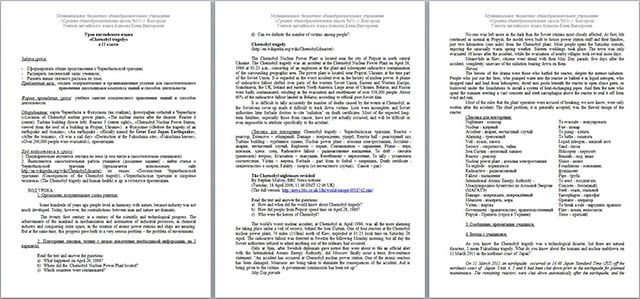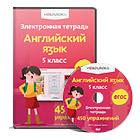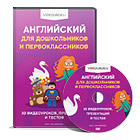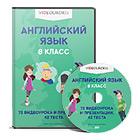Задачи урока:
Сформировать общие представления о Чернобыльской трагедии;
Расширить лексический запас учеников;
Развить навык связного рассказа по теме.
Предметная цель: создать содержательные и организационные условия для самостоятельного применения школьниками комплекса знаний и способов деятельности.
Форма проведения урока: учебное занятие комплексного применения знаний и способов деятельности.
Оборудование: карта Чернобыля и Фукусимы (на слайдах), фотографии событий в Чернобыле («Location of Chernobyl nuclear power plant», «The nuclear reactor after the disaster. Reactor 4 (center). Turbine building (lower left). Reactor 3 (center right) », «Chernobyl Nuclear Power Station, viewed from the roof of a building in Prypiat, Ukraine») и Фукусиме («Before the tragedy of an earthquake and tsunami», «An earthquake - officially named the Great East Japan Earthquake», «After the tsunami», «It was a sad day» «Destruction at the Fukushima site», «Fukushima heroes», «Over 200,000 people were evacuated»), презентации.
Ход подготовки к уроку.
1. Предварительно изучается лексика по теме (в том числе и самостоятельно учащимися).
2. Выполняется самостоятельная работа учащихся (домашнее задание) - найти статьи о Чернобыльской трагедии (предлагается использовать сайт http://en.wikipedia.org/wiki/ChernobyLdisaster) по темам: «Последствия Чернобыльской трагедии» (Consequences of the Chernobyl tragedy), «Чернобыльская трагедия и здоровье человека» (The Chernobyl tragedy and human health) и др. и готовятся презентации.
Ход урока.
1. Оргмомент, вступительное слово учителя:
Some hundreds of years ago people lived in harmony with nature, because industry was not much developed. Today, however, the contradictions between man and nature are dramatic.
The twenty first century is a century of the scientific and technological progress. The achievements of the mankind in mechanization and automation of industrial processes, in chemical industry and conquering outer space, in the creation of atomic power stations and ships are amazing. But at the same time, this progress gave birth to a very serious problem – the problem of environment.
2. Повторение лексики, чтение с целью извлечения необходимой информации, на 2 варианта.
Read the text and answer the guestions:
What happened on April 26, 1986?
Where did the Chernobyl Nuclear Power Plant located?
Which countries were contaminated?
Can we definite the number of victims among people?
Chernobyl tragedy.
(http://en.wikipedia.org/wiki/ChernobyLdisaster)
The Chernobyl Nuclear Power Plant is located near the city of Pripyat in north central Ukraine. The Chernobyl tragedy was an accident at the Chernobyl Nuclear Power Plant on April 26, 1986 at 01:23 a.m., consisting of an explosion at the plant and subsequent radioactive contamination of the surrounding geographic area. The power plant is located, near Pripyat, Ukraine, at the time part of the Soviet Union. It is regarded as the worst accident ever in the history of nuclear power. A plume of radioactive fallout drifted over parts of the western Soviet Union, Eastern and Western Europe, Scandinavia, the UK, Ireland and eastern North America. Large areas of Ukraine, Belarus, and Russia were badly contaminated, resulting in the evacuation and resettlement of over 336,000 people. About 60% of the radioactive fallout landed in Belarus, according to official post-Soviet data.

It is difficult to tally accurately the number of deaths caused by the events at Chernobyl, as the Soviet-era cover-up made it difficult to track down victims. Lists were incomplete, and Soviet authorities later forbade doctors to cite "radiation" on death certificates. Most of the expected long-term fatalities, especially those from cancer, have not yet actually occurred, and will be difficult or even impossible to attribute specifically to the accident.
(Лексика для повторения: Chernobyl tragedy - Чернобыльская трагедия, Reactor – реактор, Extencive – обширный, Damage - повреждение, ущерб, Reactor hall - реакторный зал, Turbine building - турбинное здание, Nuclear power plant - атомная электростанция, Accident - авария, несчастный случай, Explosion – взрыв, Contamination – заражение, Plume - перо, плюмаж, здесь: след, Radioactive fallout - радиоактивные выпадения, То drift - сносить (разносить) ветром, Evacuation – эвакуация, Resettlement – переселение, То tally - установить соответствие, Victim – жертва, Forbade - past from to forbid – запрещать, Death certificate - свидетельство о смерти, Fatality - смерть (от несчастного случая), Cancer – рак)
The Chernobyl nightmare revisited.
By Stephen Mulvey, BBC News website
(Tuesday, 18 April 2006, 11:46 GMT 12:46 UK)
(The full version: http://news.bbc.co.uk/1fhi/world/europe/4918742.stm)
Read the text and answer the guestions:
How and when did the world know about Chernobyl tragedy?
How did people from Pripyat spend time on April 26, 1986?
Who were the heroes of Chernobyl?
The world's worst nuclear accident, at Chernobyl in April 1986, was all the more alarming for taking place under a veil of secrecy, behind the Iron Curtain. One of four reactors at the Chernobyl nuclear power plant, 70 miles (110km) north of Kiev, exploded at 01:23 local time on Saturday 26 April. The radioactive fallout was detected in Sweden the following Monday morning, but all day the Soviet authorities refused to admit anything out of the ordinary had occurred.
Only at 9pm, after Swedish diplomats gave notice they were about to file an official alert with the International Atomic Energy Authority, did Moscow finally issue a terse, five-sentence statement: "An accident has occurred at Chernobyl nuclear power station. One of the atomic reactors has been damaged. Measures are being taken to eliminate the consequences of the accident. Aid is being given to the victims. A government commission has been set up."
May Day parade.
No-one was left more in the dark than the Soviet citizens most closely affected. At first, life continued as normal in Pripyat, the model town built to house power station staff and their families, just two kilometres (one mile) from the Chernobyl plant. Most people spent the Saturday outside, enjoying the unusually warm spring weather. Sixteen weddings took place. The town was only evacuated 36 hours after the accident, while the evacuation of nearby villages took several more days.
Meanwhile in Kiev, citizens went ahead with their May Day parade, five days after the accident, completely unaware of the radiation bearing down on them.
Весь материал - в документе.

 Получите свидетельство
Получите свидетельство Вход
Вход












 Разработка урока по английскому языку «Chernobyl tragedy» (62.5 КB)
Разработка урока по английскому языку «Chernobyl tragedy» (62.5 КB)
 0
0 1115
1115 84
84 Нравится
0
Нравится
0


